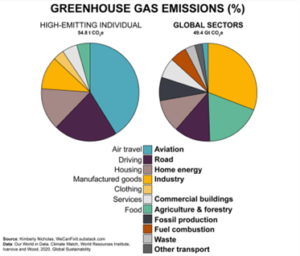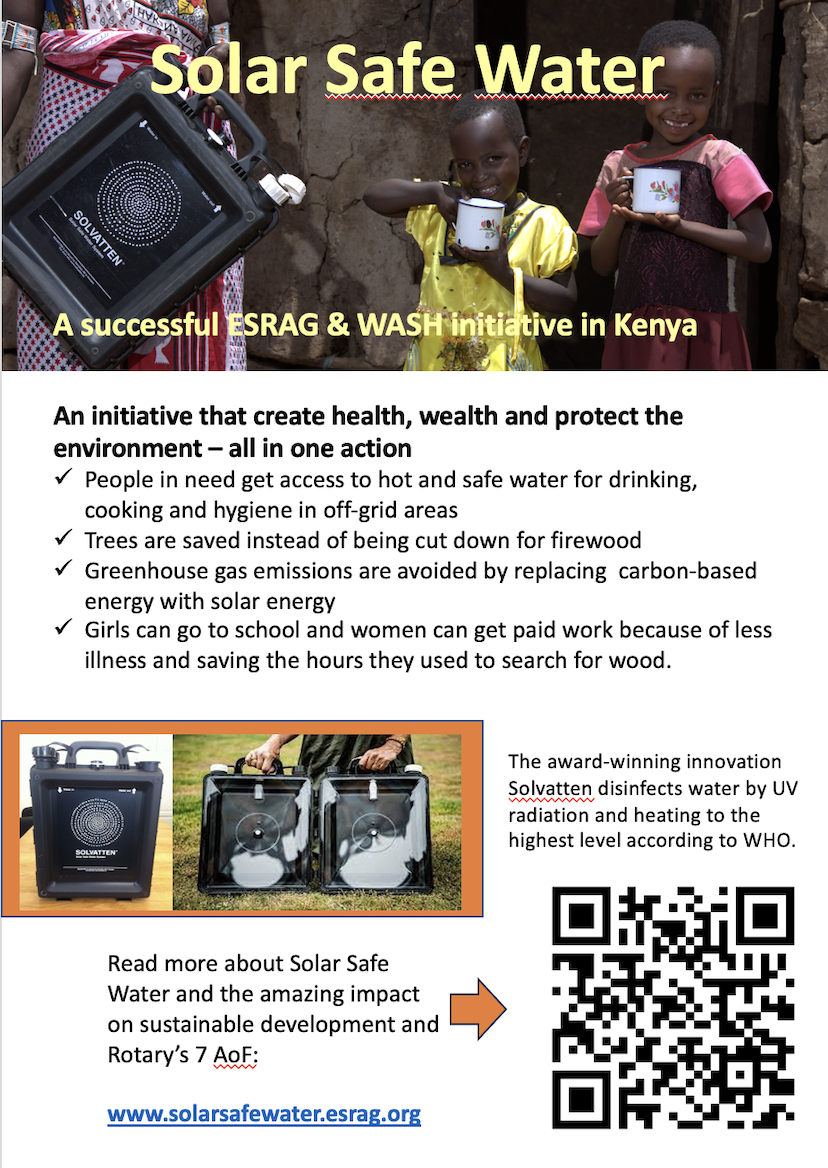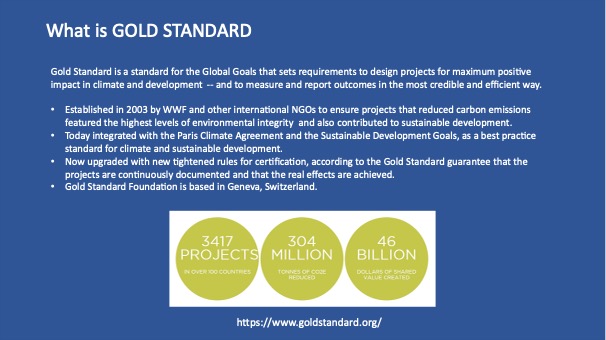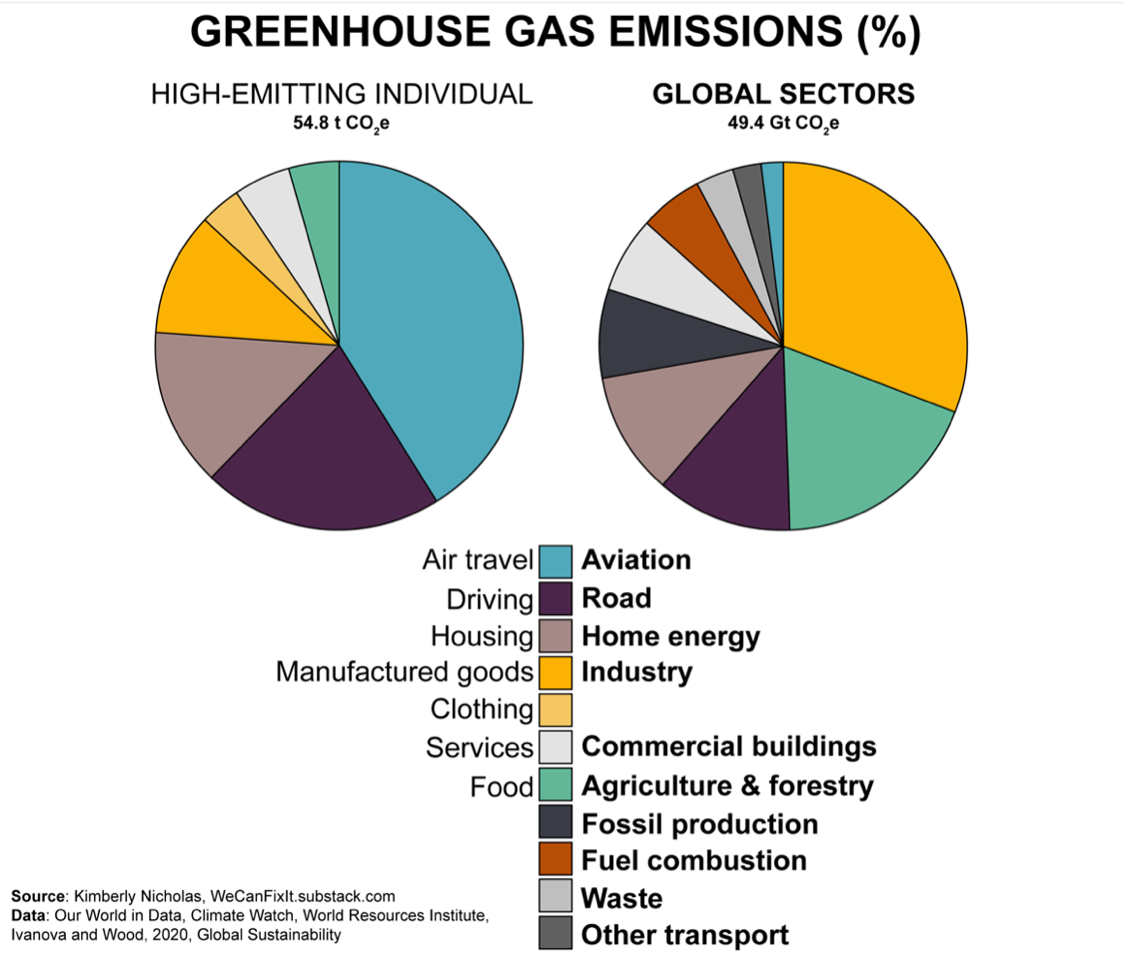By Ingrid Hesser and Gunilla Östberg, ESRAG Europe Chapter
Just the other day we attended a Rotary Club meeting in central Stockholm. At our table was another guest Rotarian, and we got into the subject of climate and the urgent need to reduce greenhouse gas emissions. “Just look at China and their emissions, and the same goes for India,” was his argument. The same line of thinking we have heard too many times. It made us refer to a brilliant article by scientist Kimberly Nicholas, illuminating the confusion between GLOBAL statistics on effective actions for climate, and effectiveness of personal, national or company actions.
As Kimberly Nicholas writes, “A lot of well-meaning people are missing out on effective climate actions because they’re thinking about emissions at the wrong level. This is a problem because we need to use our limited time and resources well to reduce emissions fast and fairly.” In an interview with the Washington Post, she added, “Ninety percent of the world doesn’t need to reduce their emissions, but most readers of The Washington Post probably do,” she said.
Those of us in the global top 10% high-emitters (earning over $38,000/year) do need to reduce our overconsumption. We tend to live bigger, have bigger cars, consume more, and fly significantly more than the remaining 90 percent.

Comparing the breakdown of annual emissions from high-emitting individuals with global sectoral emissions. Global data broken down by Our World in Data. High-emitting individual data from Ivanova and Wood, 2020. Thanks to Emma Li Johansson for DataViz.
Here’s a common example: “Flying is just a few percent of emissions. What’s the point in my flying less?”
Yes, emissions from flying are small on a GLOBAL level, but that’s because a very small percentage of humanity can afford to fly. For an INDIVIDUAL high-emitter, see figure 1. Flying is likely to be their largest source of emissions. The higher our income, the more likely most of our emissions come from flying and driving, as indicated in figure 1.
Just one round-trip flight between Seattle and New York emits 1 ton of greenhouse gases (GHG), That is as much as we are allowed to emit in a year, in order not to affect the climate negatively. For a round trip by air from Hamburg to Singapore the emissions are as high as 2.6 tons of GHG. (Refer to https://flightemissionmap.org/ including high altitude effects).
The global top 10 percent of high-emitters need to act now. Climate change already affects us today, mercilessly without exception, and the situation will escalate if we do not act now. The greatest responsibility rests with those of us who are wealthy: we need to make our lifestyle more sustainable immediately, choosing effective measures that create high-level lasting results. Flying less is one of them, driving less is another.
How to compensate for unavoidable travel. Perhaps you have already booked your flight to attend the next RI conference? Or need to fly for other reasons?
There is a way to compensate for the emissions created by your flight. But beware, many compensation projects have been criticized for not producing lasting or documented reductions in greenhouse gas emissions. Some have even created other problems such as land claims for tree planting in conflict with local people.
Here ESRAG’s “Solar Safe Water” initiative can play an important role in compensating GHG emissions. With Solvatten’s new Gold Standard certification of the Solar Safe Water climate project in Kenya, your compensation can be guaranteed due to rigorous follow-up and continuously documented procedures and results, all according to the new tightened rules for Gold Standard certification.
In addition to reduced emissions of greenhouse gases, the Solvatten Solar Safe Water project actively contributes to sustainable development according to Agenda 2030 and Rotary’s seven Areas of Focus. As part of the Gold Standard certificate, Solvatten advances goals 1, 3, 5, 6, 7, 13 and 15. All seven SDGs are as well-documented as the reduction of greenhouse gas emissions.
Let’s return to the Hamburg – Singapore flight example: A Solvatten heater compensates for 7 tons of carbon emissions at a cost of $145. To compensate for the 2.6 tons of emissions, we need to invest in one third of a Solar Water Heater, which is equivalent to $54. This is a competitive and affordable compensation investment that provides a guaranteed effect of reduced emissions.
What is Solvatten’s Solar Safe Water? Solvatten’s projects are about providing people in need with hot and safe water by providing them with an award-winning innovation for water treatment that only uses the sun as an energy source. Equipped with this innovative solution, families who previously depended on using wood, charcoal, or fossil fuels as energy for water treatment will now be able to replace them with clean energy.

Solar Safe Water: a successful ESRAG and WASH initiative in Kenya.
Trees will no longer be cut down for firewood. This reduces deforestation and protects biodiversity. Perhaps, most importantly, the success of this carbon offset doesn’t require any land to be claimed for tree planting, preventing conflicts which often arise with the local population and farmers due to the land area needed for tree-based carbon offset projects.

What is Gold Standard?
What is Gold Standard certification? Gold Standard for the Global Goals was established by the World Wildlife Fund and other international NGOs to combine climate action and sustainable development. It is now integrated with the Paris Climate Accord and the United Nations’ Sustainable Development Goals as a best practice standard. To be certified under the Gold Standard projects must meet rigorous requirements to ensure that the projects are continuously documented and that the real effects are achieved.
As the offset for that Hamburg-Singapore round trip makes clear: if we can afford to fly, we can afford to compensate!
Both authors are eminent sustainability consultants who have served as Co-Chairs of ESRAG’s Europe Chapter. Ingrid Hesser is a member of the Rotary Club of Lidingö. Gunilla Östberg is an ESRAG Director and a member of the Rotary Club of Stockholm Djurgården.

